|
Home
Home
Pictures Abbey
Seeds
Weaving
Lace Trade
Carving
Ancient Artefacts Local Heroes
Historic Walk Family research
Museum News Other museums
Links
|
| Coggeshall was one of the Quakers' earliest strongholds. In 1655 George Fox, the founder of the Society of Friends, came here and spoke to a meeting of two thousand people. A burial ground was opened at Crouches in 1690 and had a lease of 480 years. It was enlarged in 1706 but was said to be full in 1783. The Quakers owned numerous small and large pieces of ground - some used, some leased to provide income - most of it in Crouches or Stoneham Street, including a site for the Vestry to build a workhouse in 1801. There were houses in the area, too. Later, in 1856, a burial ground was opened at Tilkey and there is still a burial ground at Tilkey Cottage, where the Doubleday family is buried. |
| |
|
|
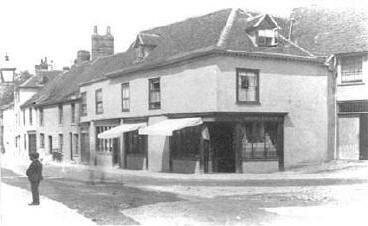
|
|
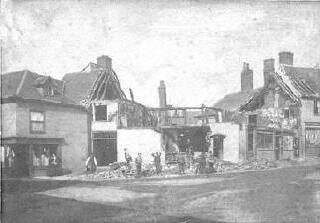
|
| Doubleday's shop around the time of its' centenary in 1889. Alongside the shop, on the right, is the 'Red Lion' public house |
|
1894 - the 'Red Lion' is destroyed by fire despite the efforts to save it.
|
|
|
William Doubleday and his wife Hannah started their grocer's shop in 1789 and were an influential and philanthropic family. They had eight children and William junior (born 1805) stayed with his father to help run the grocery business. In 1854 William junior took over the shop on the death of his father, and in turn, his son Thomas worked as an apprentice in the family business and later became the owner. In 1889 the shop commemorated its Centenary by issuing china with transfer prints of the shop on the pieces.
The last of the Coggeshall Doubledays ,Thomas, died in 1961 and is buried with other members of his family in the Quaker burial ground at Tilkey. The family did much for the people of Coggeshall and Thomas is still remembered with affection for his charitable work, and the newly-created Doubleday Garden is a lasting reminder of this Coggeshall family.
|
|
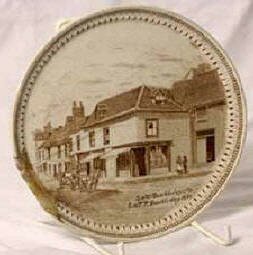
|
|
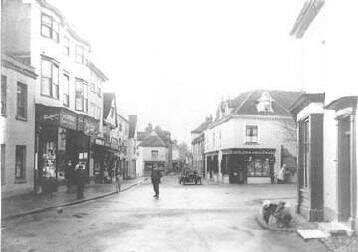
|
|
The centenary plate issued in 1889
|
|
Looking West at Market End c1915, Doubleday's shop is on the right, by the car. |
|
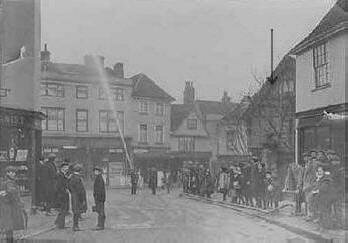
|
|
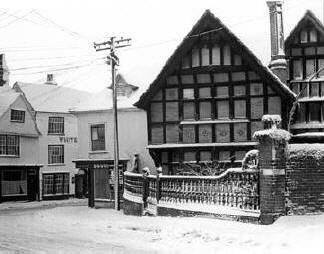
|
| 1910 picture of Coggeshall's new water supply being tested. The house marked by the arrow belonged to the Doubleday family and was built on the site of the 'Red Lion' (see above) |
|
The Doubleday family home and the shop beyond. This picture, taken in the winter of 1963, is probably the last one of of the house as it was demolished soon afterwards. |
| . |
| Read about Henry Doubleday, one of the most well-known of the family and in whose honour the Doubleday Research Institute was named on the "Local Heroes" page. |
|
